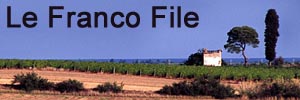We packed up Guillaume at Tebay Services soon-to-be-no-more campsite and headed south for home on the M6. A radio report soon announced that some pratts decided to have an accident on the M6 around Tebay but happily they did so behind us. We were off and running.
We were running until something broke down in the lengthy road works section around J17. Why is it always in the coned-off-anyway stretches of road? The inevitable queues and delays built up. My primary navigatrix would need a natural break heading into unknown delays so we pulled into the next services before hitting the queues. When we left the services, the back of the queue had already caught us. We crawled onwards.
Eventually we got through the trouble noticing that now another vehicle had broken down in the northbound carriageway, also in the already restricted road works section. See? Faultless!
Declining the exorbitant £10 fee for a car and caravan on the M6 Toll road, we ran into more delays where slip roads came in. Take note, cheapskate!
Getting through that delay took us beyond Birmingham and towards the next necessary natural break so we peeled off into Corley Services. Towing vehicles were directed in along with the HGVs. Chaos! Trucks were reversing into the odd remaining parking bay and others were manoeuvring. No room at the inn. I tried stopping somewhere unofficial but caused something of an obstruction The toilet stop was impossible. We were forced to continue.
We filtered off the M6 and onto the M1 heading for the next service area, Watford Gap, to try our luck there. Our luck was no better – no room at the inn, again. Francine came up with the jolly idea of refuelling just so she could use the loo. Why not? Park at the pumps. I didn’t actually need fuel but paying top dollar for it worked. Comfort at last.
As we left to re-join the M1 we noticed that, not only were all the HGV parking spaces taken but HGVs were also littered/abandoned all the way along the hard shoulder of the slip road back onto the motorway, their drivers also clearly having been unable to park somewhere official and having walked back up the slip road for their break.
We don’t usually travel on a weekday, now, preferring the weekend, and particularly Sunday, when HGV traffic is considerably less. Most of the trucks are foreign from Catholic countries and most of them won’t work on a Sunday. Here we were travelling on a Friday and the inside lane was pretty much constant HGVs, with a fair few extras in the second lane slowly overhauling the inside lane.
The truck drivers are on the clock, the spy in the cab, a tachograph, so there are enforced stops for them. Our truck traffic has increased out of all recognition since the rest areas were originally constructed and, though some may have been extended, there is now nothing like enough capacity to cope with them all. Our major trunk roads are swamped with HGVs. We did see two specialist truck stops, which are presumably a new phenomenon, signed on our journey … but two in 250 miles? There has of course been an amazing increase in private car traffic as well but where we were sitting, it’s the sheer volume of heavies with which the country can no longer cope.
When the M25 was finished I remember people saying that it was designed using traffic volumes that were now 10 years out of date. The service areas are suffering similarly.
We got home, relieved. It’s enough to make you want to stay there.


















Recent Comments